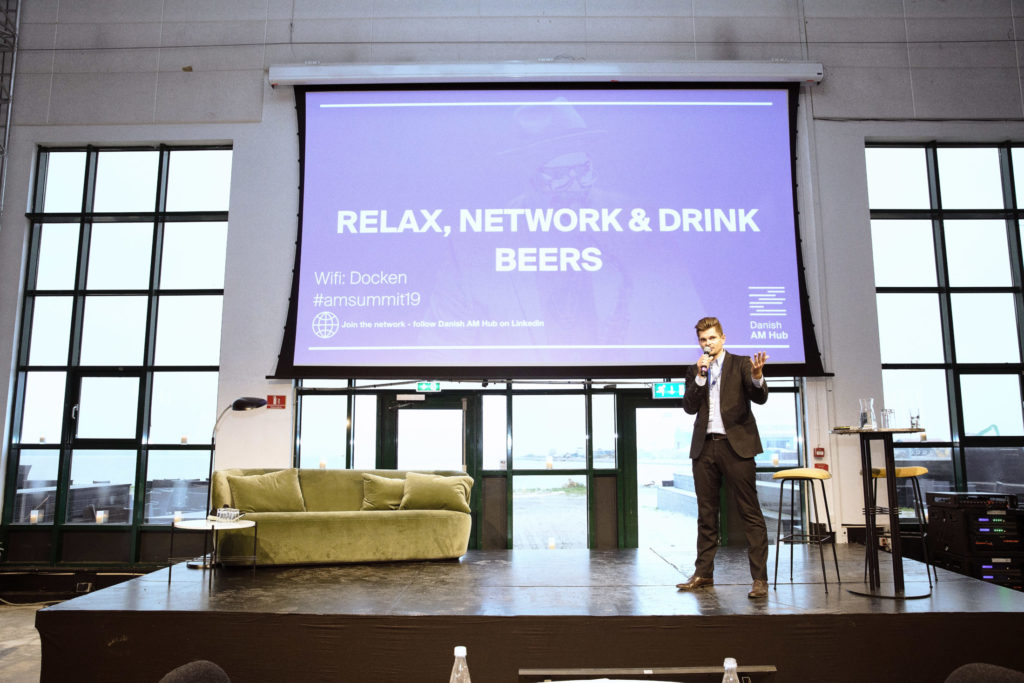Germany, Sweden, and the U.S. got an early lead in 3D printing because the first technologies were commercialized and found initial industrial applications in those countries. The Netherlands became a focal point of the consumer 3D printing wave later on. Subsequently, Chinese firms and U.S. VC funding brought their countries to the fore. But, in the land of Lego and open-faced sandwiches, there was little to no 3D printing activity. Bereft of the tight focus of pro-3D printing Singapore and the largess of the gung ho folks in the UAE, the Danish AM Hub had to make do.
Through summits and a tight marshaling of resources, the Danish AM Hub made remarkable progress and has impressed us with its efficacy and gumption. Now they can expect more growth because €5.4 million from the Danish Industry foundation will be earmarked to drive forward AM in the country, especially targeting small to medium businesses.

The money will go to:
- New ways of designing for 3D printing to create more energy efficient goods
- Creating circular models for 3D printer filaments based on various waste streams
- Attempting to reduce CO2 emissions by establishing “more digital, distributed, and on-demand value chains”.
“Ever since the Bronze Age, we have manufactured with molds or milling methods. Additive is a new production method with a huge potential to cut down on material, transport and waste. One of the pitfalls, however, is the large energy consumption per part, which is why we need to put the technology in play in countries such as Denmark with a large portion of renewable energy,” said Danish AM Hub CEO Frank Rosengreen Lorenzen. “One key initiative that we will develop with our members is to find a way to calculate the CO2 emissions by changing e.g. from formative to additive manufacturing and turning that into a piece of software that can help navigate how to manufacture in the most sustainable way. We invite experts, large manufacturers and technology providers to join us in that important initiative.

The group further stated:
“Danish AM Hub brings together a committed expert team and growing network of partners and investors all joined on the mission to transform manufacturing. Failing to make such a transformation will make climate targets unachievable. By 2050, the global demand for industrial materials such as steel, cement, aluminum, and plastics is projected to increase by a factor of two to four.
“We have to start prioritising how we can manufacture with sustainable materials and with renewable energy and AM can play an important role combined with Danish renewable energy sources.”

All in all, this is a very interesting way to look at the problem of global warming. The Danes look at how Danish green energy is enticing data centers from Microsoft and Google to open up in Denmark. They then parlay this into Denmark becoming the best place to manufacture. It’s a lovely thesis that the best manufacturing location should be the most sustainable. It would be a sea change since a lot of manufacturing is actually motivated to be less and less sustainable—e.g. move to a greenfield site away from the city to be reduce costs.
In the light of climate change and electrification, it would be true that the most sustainable places are the ones using the least amount of fossil fuels and that perhaps they should be prioritized. This is a very compelling argument for Danish companies making Danish products for Danish people. For how many miles away this thesis holds up depends on the transport methods and the carbon released through them. I do, however, love the idea of nations competing to be the greenest places to manufacture.
Will “most sustainable steel earrings” be a major decider for manufacturing firms or, indeed, consumers? I would love for the Danish AM Hub to promote such thinking and truly green branding of manufacturing. For now, this organization—that has so far managed to collectively bring together and empower a small community of 3D printing firms with industry—has punched well above its weight. I really hope that more nations and cities look at how the Danish AM Hub is unifying and deploying the resources of a community of companies to promote 3D printing there.
Subscribe to Our Email Newsletter
Stay up-to-date on all the latest news from the 3D printing industry and receive information and offers from third party vendors.
You May Also Like
Precision at the Microscale: UK Researchers Advance Medical Devices with BMF’s 3D Printing Tech
University of Nottingham researchers are using Boston Micro Fabrication‘s (BMF) 3D printing technology to develop medical devices that improve compatibility with human tissue. Funded by a UK grant, this project...
3D Printing Webinar and Event Roundup: April 21, 2024
It’s another busy week of webinars and events, starting with Hannover Messe in Germany and continuing with Metalcasting Congress, Chinaplas, TechBlick’s Innovation Festival, and more. Stratasys continues its advanced training...
3D Printing Webinar and Event Roundup: March 17, 2024
It’s another busy week of webinars and events, including SALMED 2024 and AM Forum in Berlin. Stratasys continues its in-person training and is offering two webinars, ASTM is holding a...
3D Printed Micro Antenna is 15% Smaller and 6X Lighter
Horizon Microtechnologies has achieved success in creating a high-frequency D-Band horn antenna through micro 3D printing. However, this achievement did not rely solely on 3D printing; it involved a combination...





























